The mask and the metaphysics of the "other-than-self": the youthful initiations in ancient Rome and the Dionysian symbolisms according to Károli Kerényi and Walter Otto; L'"archetypality and paradigmatic nature of the archaic man "who, according to Mircea Eliade," recognizes himself "truly himself", only to the extent that he ceases to be "; the Daimon and the "Antithetic Mask" in WB Yeats's Vision; Dionysus in the mirror, Vishnu who dreaming creates the countless worlds and Thomas Ligotti's "solipsistic god of dreams".
di Marco Maculotti
cover: Roman fresco depicting an initiation scene with the mask of Silenus Pater
(This article arises from the cataloging of the notes collected for the conference “Only masks? And the face? ", held in Florence for the Eumeswil Association on 5 December 2019)
[In first part of our study on mask, doppelgaänger, puppet we focused on the analysis of these symbols, harbingers of "multiplicity" and "heterogeneity" in the human being, in the literature of the last few centuries (Hoffmann, Poe, Hesse, Lovecraft), in some cinematographic works by well-known contemporary directors (Polanski, Lynch, Kubrick) and in the Worldview pessimistic of Thomas Ligotti.
In this second part of our study we will instead focus on the meaning that the mask (and the Daimon, connected to it in some way) had in the metaphysical vision of one of the greatest geniuses of the last century, the Irish William Butler Yeats, to then go on to identify noteworthy parallels with what was said in Orphic myth of Dionysus Zagreus dismembered by the Titans in the act of contemplating himself in the mirror, as analyzed by Giorgio Colli. Finally, we will conclude our study by citing the studies on the mask of Károli Kerényi need walter otto, with particular attention to the role of the latter in the youth initiations of the ancient Mediterranean ecumene.]
4. Mask and Daimon in WB Yeats
William Butler Yeats, drawing inspiration above all from Enneadi of Plotinus, he considered a unique concept - the soul or Daimon - existing forever, and conceived every Individual daimon as an aspect of the all-encompassing One, as a facet of the latter, the foundation of all being. In the manner of the Presocrats, Platonists and Pythagoreans, the Irish poet also considers human beings to be one faded copy of the gods, who only have a real life:
"As I sat on that old gray stone,
Under the old tree broken by the wind,
I knew the One is animated,
Mankind inanimate fantasy. »
Not only is the individual soul one in a certain way pale imitation gods - or better thanOne that is multifaceted in turn in various DaimonesJungianly Archetypes -, but also all the spiritual entities that man can experience, such as those who guided him in the process of automatic writing, which Yeats called the Instructors, appear as Masks ultimately evanescent: "during the first month of communication one of them told me:" Often we are nothing more than created forms "and another that spirits do not tell a man what is true, but create such conditions, such a crisis of fate, that man is forced to listen to his own Daimon»[YEATS 32].

swedenborg, talking about Communion between the Living and the Dead, said that "all those who are between the celestial state and death are plastic, fantastic and deceptive, dramatic personae of our dreams»[32-33]. In other words, spirits, ghosts, gods and demons would be nothing more than unintegrated parts of our deepest selves, appearing on the stage of our inner life like theatrical comedians in front of their audience.
The writings Yeats and his wife produced during the automatic writing sessions led the poet to believe that 'all unity [of the Self, ed.] derives from Mask'"la Antithetic mask it is described as a "form created by the passion to unite with ourselves"". The Will of the individual "can attain self-knowledge and expression only by seeking or accepting one's direct opposite" [94-95]. "Passionate love comes from Daimon than through union with another Daimon, tries to reconstruct, above the antinomies, its true nature"[248]: hence, also the parallelism intuited by the Poet that exists between the Daimon and thePhoto Gallery.
The Daimon thus rises, in Yeats's eschatology, to a link between man and God, through which all souls are in a certain sense connected to each other, according to their natural predispositions and according to the fabric of Fate. Hence, the great importance that the Poet recognizes foruniqueness of the experience of the individual soul, guided by one's Daimon: likewise to the Platonic doctrine ofhistory, the "Fall" into the sublunar plane of reincarnations derives from an intentional and pre-natal choice of the Daimon. The Daimon, however, is not of this world: its understanding, in the limited sphere of human knowledge, can only take place by virtue of the dialectical relationship existing between the first and the individual soul shipwrecked in the flow of events on the plane of manifestation. "All things - Yeats writes - they are present as an eternal moment to our Daimon […] But this instant is necessarily not intelligible to all those who are linked to the antinomies».
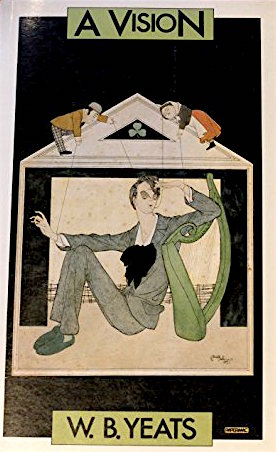 As emphasized Luca Gallesi, «Yeats defines the Daimon as the essential perfection to which man must strive, which represents the perfect and actual side of the Being of which man the potential and perfectible aspect"The ghost is simple, the heterogeneous man is confused ..."" [Esotericism and Folklore in William Butler Yeats 35]. The Daimon is defined ultimate self e self buried man. The Daimon represents the archetypal part of man, "the umbilical cord that unites every man to the Platonic idea of Man" [36], and at the same time it can be understood as "a daily presence that we perceive as the other half of our being with which we have a dialectical relationship of conflict and through which we can direct ourselves towards what is right "[WALESIS 37].
As emphasized Luca Gallesi, «Yeats defines the Daimon as the essential perfection to which man must strive, which represents the perfect and actual side of the Being of which man the potential and perfectible aspect"The ghost is simple, the heterogeneous man is confused ..."" [Esotericism and Folklore in William Butler Yeats 35]. The Daimon is defined ultimate self e self buried man. The Daimon represents the archetypal part of man, "the umbilical cord that unites every man to the Platonic idea of Man" [36], and at the same time it can be understood as "a daily presence that we perceive as the other half of our being with which we have a dialectical relationship of conflict and through which we can direct ourselves towards what is right "[WALESIS 37].
In Yeats's vision, the various components (Faculty) of the individual, apparently conflicting, attract each other precisely by virtue of this initial discord, as if there were at stake a force of attraction capable of changing its sign, transforming the opposition into a conjunction of opposites (contiunctio oppositorum) [YEATS 105]:
«Being becomes aware of itself as an autonomous being thanks to certain facts of Opposition and Discord […]. There is an attraction imposed between the Opposites, because the Willingness has a natural desire for Mask , Creative Mind a natural perception of Body of Fate.»
Comparing the incarnation in this world to the Commedia dell'Arte, that is to the Italian improvisation theater, Yeats compares the Daimon to an impresario who provides the actor with an inherited script (the Body of Fate) it's a Mask - one part - “As different as possible from her natural self or Willingness, and lets him improvise - through his Creative Mind - the dialogue and the details of the plot. "Life is an effort, made useless by the four blades of his mill, to reach a double contemplation, that of the chosen Image and that of the Image given by fate." [five].
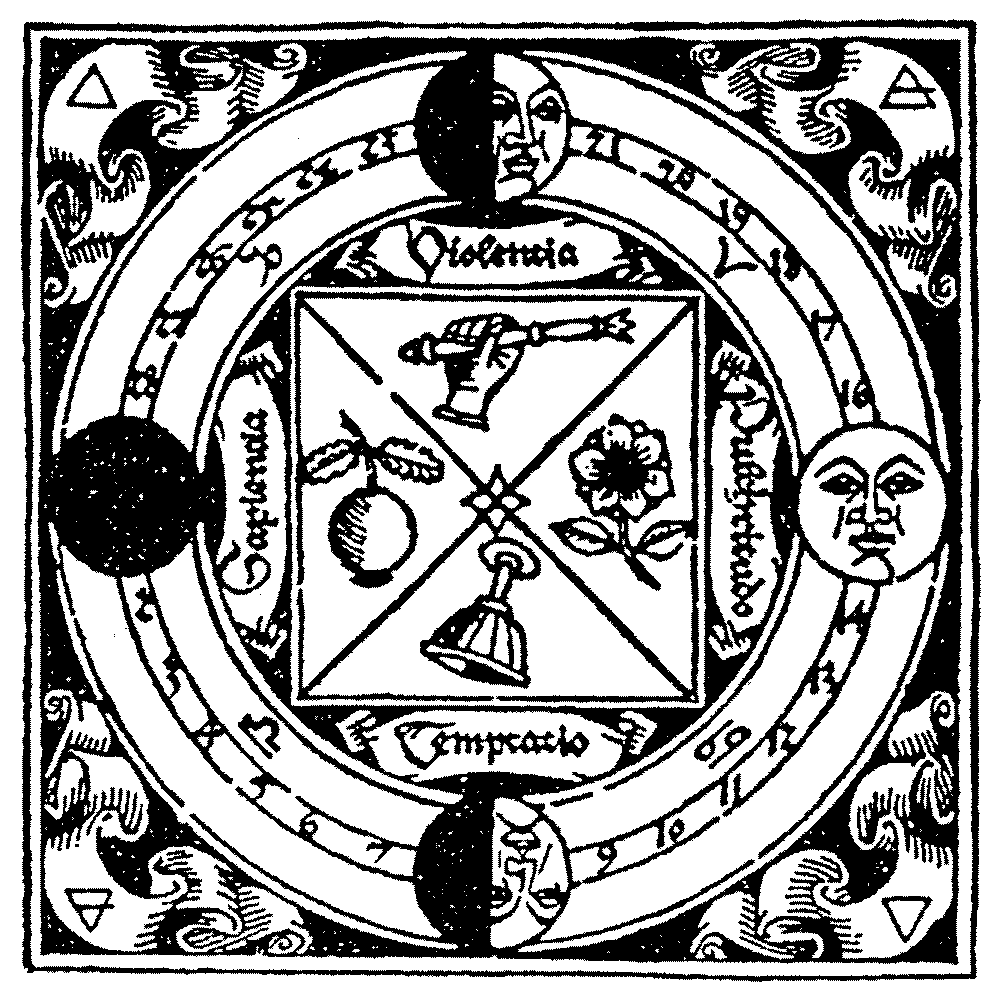
4.1. The Daimon according to James Hillman
The vision of is not far removed james hillman, Jungian psychologist analyst, expressed ne Code of the soul. According to Hillman, the soul realization of an individual would be realized in the proportion in which the latter would allow his own to be expressed Daimon, which would manifest itself from an early age with sudden illuminations or electrocutions. Different archetypes can influence the soul path of the individual, replacing one after the other just like an actor who changes stage costumes several times: however, above all these Masks, the Daimon remains immovable as a superior guide, who through archetypes / masks can act on the maturation of the individual, sometimes even in a somewhat enigmatic way.
5. Dionysus in the mirror
What has been said so far can be compared with an Orphic myth, reported and explained by Giorgio Colli, which ideally links us above all to the scene of Steppenwolf of Hesse in which Harry Haller, looking in the mirror, sees himself fragmented into thousands of images: the myth of Dionysus dismembered by the Titans, that is to say the myth of the primordial disintegration of the Being, or of the Absolute Consciousness. Dionysus must be somehow attracted, so the Titans distract him with the following objects, obviously all with a very deep symbolism: «the top, the spinning and roaring toy, the folding dolls and the beautiful golden apples of the Hesperides with a resounding voice, [...] the astragalus, the ball, [...] the mirror, the fleece».
Through the union of the sounds of the top and the roar (the "spinning and roaring toy") «it was possible to obtain infinite sounds, which were connected with Dionysus: the bull bellowing, the hiss of the wind, the roar of thunder, etc. In this total abandonment to rotate on oneself and at the same time by rotating the rhombus, a hallucinatory state was provoked that produced visions, shapes, figures. It's pictures in action: puppets, self-propelled automata, like those built by Daedalus, masks. Until the actor. The trance causes actions and sounds, while songs rich in wisdom and hidden truth emerge from the figures". Instead, "astragalus, the game of dice in relation to divination, recalls time ("Time is a child who plays dice", Heraclitus) »[MASTROPASQUA], and therefore its primordial advent, that is to say the principle of Becoming, a consequence of the" dismemberment "of Dionysus.
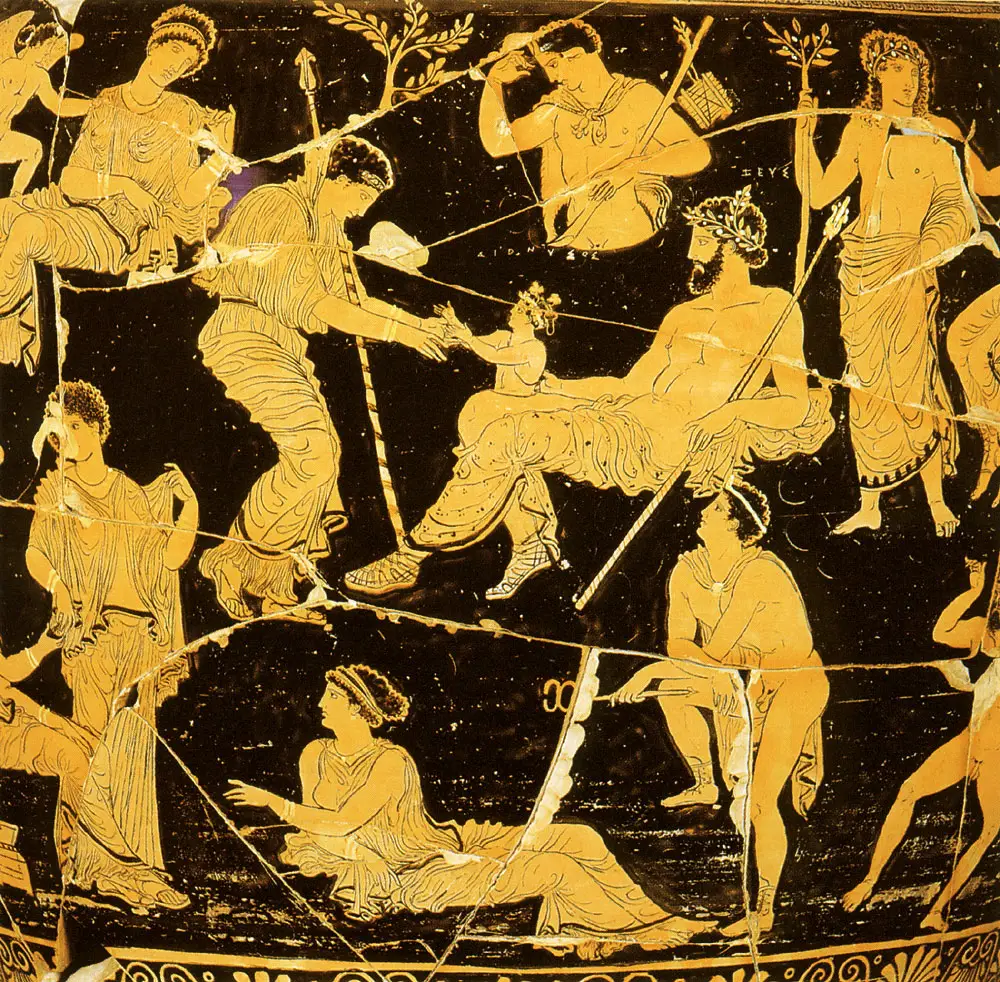
But it is mirror the most important symbol, as it is while the little Dionysus is enchanted by it that the Titans provide for its dismemberment. So he analyzes the myth Giorgio Colli [195-196]:
«Looking in the mirror, the god sees the world as his own image. The world is therefore a vision, its nature is only knowledge. The relationship between Dionysus and the world is that between divine life, inexpressible, and its reflection. The latter does not offer the reproduction of a face, but the infinite multiplicity of creatures and celestial bodies, the immense passing of figures and colors: all this is lowered to semblance, to an image in a mirror. God does not create the world: the world is God himself in appearance. What we believe to be life, the world around us, is the form in which Dionysus contemplates himself, expresses himself in front of himself. The Orphic symbol ridicules the western antithesis between immanence and transcendence […]. There are not two things, about which we must investigate whether they are separate or united, but there is only one thing, the god, of whom we are the hallucination.»
5.1. Ligotti's "solipsistic god of dreams"
That is, in addition to the previously cited passages of the Steppenwolf of Hesse, it can also be related to what the aforementioned Thomas Ligotti writes in the story Dream of a mannequin, contained in Songs of a dead dreamer (1986), in which the author also contemplates the belief, within some archaic religions (the reference probably goes to Vishnu who in the Hindu tradition, dreaming, creates countless worlds), of a sort of "solipsistic God of dreams", "of which everything is a part":
'After hearing Miss Locher I found myself subconsciously analyzing her dream from your point of view. The multiplication of her me of her in different roles (including her reversal of parts with the mannequin) actually suggested to me the idea of some divine being breaking into splinters and terrifying himself in order to relieve his cosmic tedium, as certain deities renowned in some of the world's religions are believed to do. I also thought aboutyour idea of one "Dream deity", omnipotent entity in his dream realm. Contemplating Miss Locher's dream realm I felt, deep down, the ancient evidence of a solipsistic divinity of dreams, who commands everything he sees, and of which everything is a part... »

6. Kerényi: the mask and initiation
On the other hand Dionysus has always been the god-mask par excellence: this is also reported by Hungarian historian of religions Károli Kerényi in his essay "Man and mask" (contained in Myths and mysteries), where he mentions his mask - along with the female one of the Gorgon - as prototypes of the masks of the archaic Mediterranean, adding that there are two main functions of the mask as an instrument: to hide and to frighten: Above all, the type of mask of the Gorgon is designed to terrify, to the point that in the myth it is handed down that her face brings "death by stiffening". The mask of Dionysus sometimes it is confused with that ofAchelous - "typical god of rivers and springs, half depicted as a bearded man, half as a bull, that is, mostly with horns" [465] - and of Okeanos, sometimes with that of Bread, Faun, Silenus and the Satyrs and later, in medieval times, it turns into the face of green man, the life-giving principle of plant nature.
Great importance had, in early Roman initiation rites, mask of Father Silenus, whose bearded face was similar to both the Acheloos and Dionysus masks, distinguished from the latter by an "animalistic and pronounced bodily character" [469]. In these rituals, at one point newbies were given a silver cup to drink from: however the child, reflecting himself in the concave bottom of the cup, does not see, as might be expected, his own face, but the mask of Father Silenus, skilfully raised behind him so as to make it appear in the mirrored bottom of the silver cup. "The surprise", comments Kerényi [474],
“It is so exciting and instructive […]. The child thinks he sees himself and he recognizes himself as one of those older men, fathers and teachers, who until now had dominated him and to whose number he now belongs. It is a unifying transformation, produced by the mask and, at the same time, by a paternal image: Sileni patris imago. The child unites with the fathers and he is consecrated a man capable of generating.»
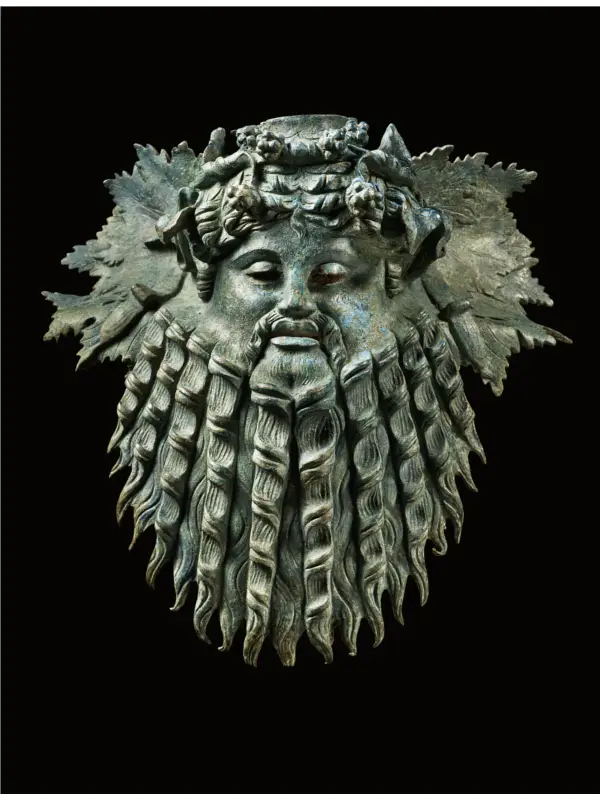
"The mask hides, the mask scares, above all however it create a relationship between the man who carries it and the being it represents". Because of its inherent rigidity, it is archaically put above all in connection with the dead. In this sense, during the rituals (especially those attributable to the so-called "winter crisis") "creates a relationship between the living and the dead. The ones are transformed into the other, or more exactly: the mask determines their union that takes place in the soul of the wearer of the mask., not only outwardly "[460]. From rite to theatrical representation: because even in Greek tragedy the dead appear in the rigid masks, "that is, the heroes of the past made to live again in the intensified vitality of the Dionysian cultic atmosphere"; but, in the ritual context, these spirits of the dead they are also to be conceived as spirits of fertility, or of the vegetative power [461].
6.1. Mircea Eliade: archetypality and paradigmatic nature of the archaic man
In this sense, what the Romanian historian of religions writes should be read Mircea eliade ne The myth of the eternal return (1949) regarding the really feel himself of the archaic man "only to the extent that he ceases to be" [ELIAD 41]:
«[…] Reality is acquired exclusively by virtue of repetition or participation; everything that does not have an exemplary model is "meaningless", that is, it lacks reality. Men would therefore have a tendency to become archetypal and paradigmatic. This trend may seem paradoxical in the sense that the man of traditional cultures recognizes himself as real only to the extent that he ceases to be himself (for a modern observer) and is content with imitating or repeating the gestures of another. In other words, he recognizes himself as real, that is, as "truly himself", only to the extent that he ceases to be so.»
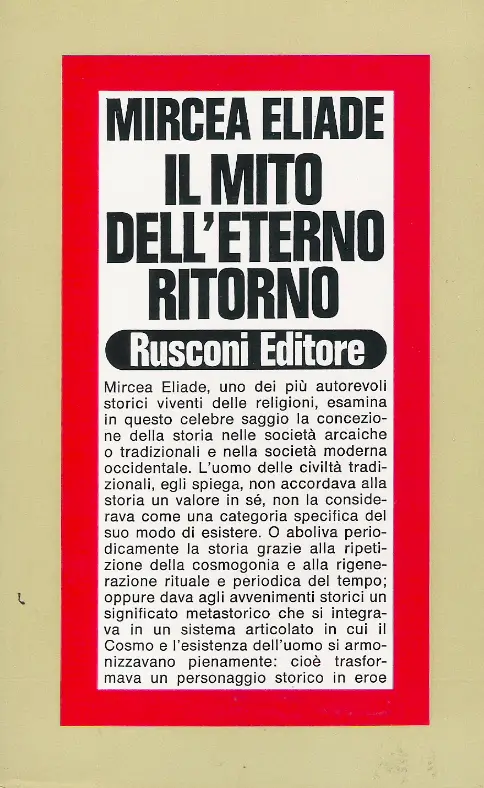
6.2. Walter Otto and the "primordial phenomenon of duality"
Also the German historian of religions and philologist Walter Friedrich Otto (quoted by Kerényi) underlines how, during the rite, the bearer of the mask is transformed, as if invested by a power, his origin must be sought in the Other World [462]:
«All the magnificence of the submerged world is presented in an overwhelming immediacy, although on the other hand it is lost in infinity. The wearer of the mask is under the impression of the greatness and dignity of those who no longer exist. He is himself, but at the same time he is another. Madness touched it, something of the secret of the raging god, something of that spirit of double existence who lives in the mask and whose last descendant is the actor»
Here Otto alludes to a "primordial phenomenon of duality, of bodily present distance, of the exciting contact with the unrepeatable, of the fraternal encounter between life and death».
And yet, Kerényi [467] comments,
«in the sphere of Dionysus there is no death, at most dead nevertheless exist and testify ofirreducibility of life.»

Bibliography:
COLLI, George: After Nietzsche. Adelphi, Milan 1974
ELIAS, Mircea: The myth of the eternal return. Rusconi, Milan 1975
WELSH, Luke: Esotericism and Folklore in William Butler Yeats. New Horizons, Milan 1990
HILLMAN, James: The code of the soul. Adelphi, Milan 2009
KERÉNYI, Karoli: “Man and mask”, in Myths and Mysteries. Einaudi, Turin 1950
LIGOTTI, Thomas: “A mannequin's dream”, in I Songs of a dead dreamer. Elara, Bologna 2008
MASTROPASQUA, Fernando: "The toys of Dionysus", its ateatro.it, March 2013
OTTO, Walter Friedrich: Dionysus. Myth and cult. Il melangolo, Genoa 2002
YEATS, William Butler: A vision. Adelphi, Milan 1973

Great article, really interesting.
This is my favorite blog, but don't expire me on platitudes.
Please, I implore you and I beg you on your knees, do not let me hear this phrase "Hillman was a student of Jung". We are on the same level of ignorance when we say "Jung was a student of Freud." or we pronounce Jang instead of Jung.
James Hillman did not analyze with Jung, but with Rivkah Schaerf-Kluger, Liliane Frey-Rohn and Carl Alfred Meier.
A well-known story for anyone who has at least studied Hillman's life and history, but I quote the source for the sake of knowledge.
https://www.animafaarte.it/james-hillman-biografia/
You are right, it would be better to correct in "Jungian psychologist analyst".
You will forgive me for this oversight, I hope: although authors like Jung and Hillman have contributed greatly to my conceptual background, the realm of psychology has never been within my competence.
A greeting, and thanks for the support.
MM